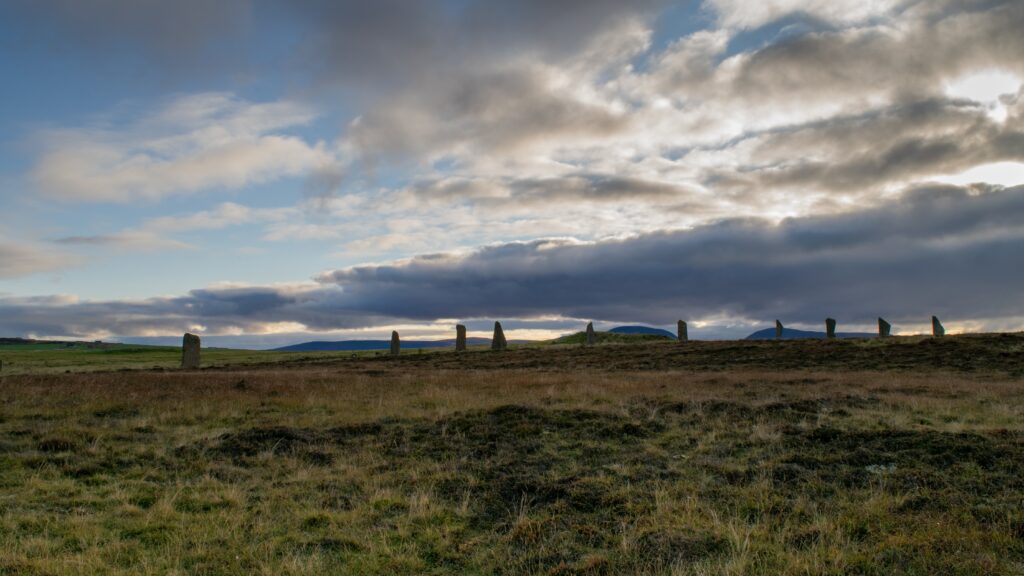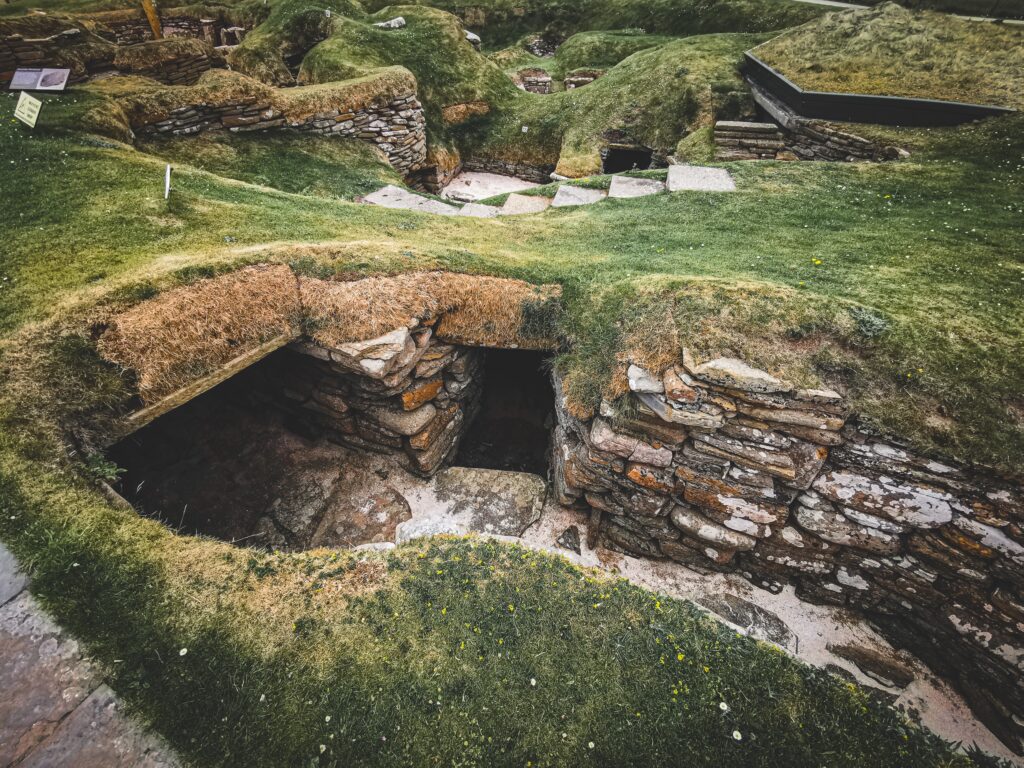Introduction to Orkney
The archipelago of the Orkney Islands lies 180 miles off the north coast of the Scottish mainland. It’s made up of 70 islands, and its history goes back thousands of years. The Neolithic era began around 6500 BC with the introduction of farming on Orkney by settlers from mainland Europe (before this time, people lived as hunter-gatherers).
The Neolithic period lasted until about 2000 BC; during this time there were many changes in lifestyle and technology that helped shape our modern world today: tools like axes and knives improved; pottery was invented; people started working with metals like copper or bronze instead of stone tools; they built houses out of stone rather than just sticks & mud like we see in earlier periods like Mesolithic times (8000 BC – 4000 BC).
The Standing Stones of Stenness
The Standing Stones of Stenness are one of the most important Neolithic sites in Orkney. Consisting of a large stone circle and two concentric rings, Stenness has been dated to between 3200 BC and 2500 BC. It’s believed that these stones were used for ritual purposes, perhaps as part of ceremonies or celebrations related to farming or fertility.
The site also contains several burial chambers–one was excavated in 1856 but has since been destroyed by erosion; another was discovered in 2007 during restoration work on the main circle (it had been hidden beneath grass).
The Ring of Brodgar
The Ring of Brodgar is a Neolithic henge monument located on Mainland, Orkney. It was built between 3200 BC and 2200 BC as part of the Heart of Neolithic Orkney World Heritage Site. The site consists of a stone circle with a diameter of about 100 metres (328 ft), surrounded by an earth bank and ditch. In contrast to other stone circles in Orkney, it has been suggested that this one was not used for ceremonial purposes but perhaps instead served as an astronomical observatory or calendar.

Maeshowe Chambered Tomb
Maeshowe Chambered Tomb is located on the mainland of Orkney, just north of the village of Stenness. It was built during the Neolithic period around 3100 BC and was used as a burial place for at least 500 years before being abandoned.
The tomb consists of a large stone cairn with a passage leading into it from above ground level. The inside is full of carved stones, including some that line the walls and others that make up standing stones in front of each chamber (or “cell”). There are also carvings on some ceiling slabs inside the tomb–these depict animals such as bulls, deer and boars as well as human figures holding weapons or tools such as axes and spears. The interior of the tomb even has graffiti left by the Vikings!
The Ness of Brodgar
The Ness of Brodgar is a Neolithic ceremonial site on the Mainland, Orkney. It’s located about 1 mile (1.6 km) west of Skara Brae and around 2 miles (3 km) north-west of Maeshowe. The site consists of several large mounds that were built between 3100 BC and 2500 BC, making it one of the oldest sites in Europe.
The name comes from Old Norse “nes” meaning promontory or headland and “Brodgar” meaning broad bay or bay farmstead; so literally translates as Broad Bay Farmsteads. This name was given by Rev James MacKenzie who excavated some parts during 1849-50 but most work was done by Dr Richard Atkinson between 1927-35 when he uncovered five different phases which are named after him: Phase I being Early Neolithic; Phase II being Middle Neolithic; Phase III being Late Neolithic; Phase IV being Iron Age settlement remains from around 700BC – 100AD (this includes brochs); finally there were two phases where no evidence was found at all so these are known as “Dark Periods”.
Skara Brae Village
Skara Brae is one of the most famous Neolithic sites in Orkney. It was discovered in 1850 by a storm, which uncovered the stone houses that had been buried under sand dunes for 5,000 years.
The village consists of eight houses and a communal building, which were built between 3100 BC and 2600 BC. Each house has three rooms: one for cooking and eating; one for sleeping; and another for storing food and tools. The roofs are made from turf laid over wooden rafters supported by stone walls.
The significance of Skara Brae lies in its preservation–it’s one of only two sites where we can see how people lived during this period (the other being Maes Howe).

The Brough of Birsay
The Brough of Birsay is a Neolithic settlement located on the island of Westray in Orkney, Scotland. It’s one of the best preserved sites in all of Britain and one that offers visitors an opportunity to explore some truly fascinating history.
The site was inhabited between 3500 BC and 2500 BC by people who built large stone houses with thick walls made from sandstone blocks quarried locally. Evidence shows that they also cultivated crops such as barley and wheat, which they stored in granaries during times when there wasn’t enough food available locally to meet demand.
The site was first excavated between 1868-72 by Charles Thomas who uncovered several houses along with various artifacts such as pottery shards (which were used for storing liquids), flint tools (used for cutting) and beads made out of jet or shale (a type of fossilized wood). These items indicate that these early farmers were not only skilled builders but also had access to materials needed for making jewelry!
The Italian Chapel
The Italian Chapel is a small stone structure located on the island of Papa Westray. It was built in 1874 by two Italian stonemasons as a place to worship, and it’s one of only two known chapels built by Italians in Scotland (the other being in Edinburgh). The interior is decorated with frescoes depicting Biblical scenes; these were painted by an Italian artist named Giuseppe Riva.
The chapel has been restored several times since its construction, most recently in 2013-2014 when it underwent extensive repairs after years of neglect caused by storm damage and vandalism.
Experience your own private tour of the Orkney Islands, visit An Turas Heritage Expeditions
Author: Kirsty Duncan
